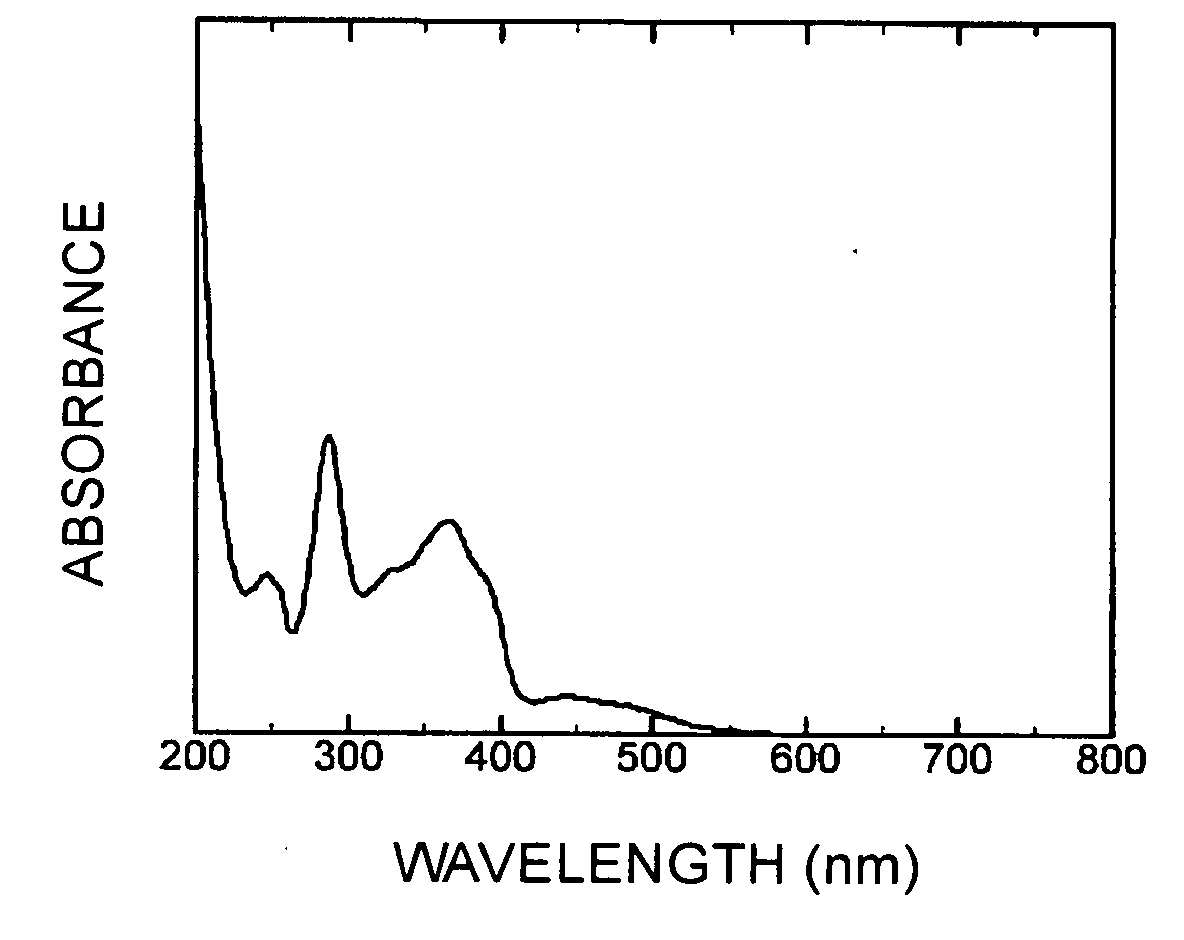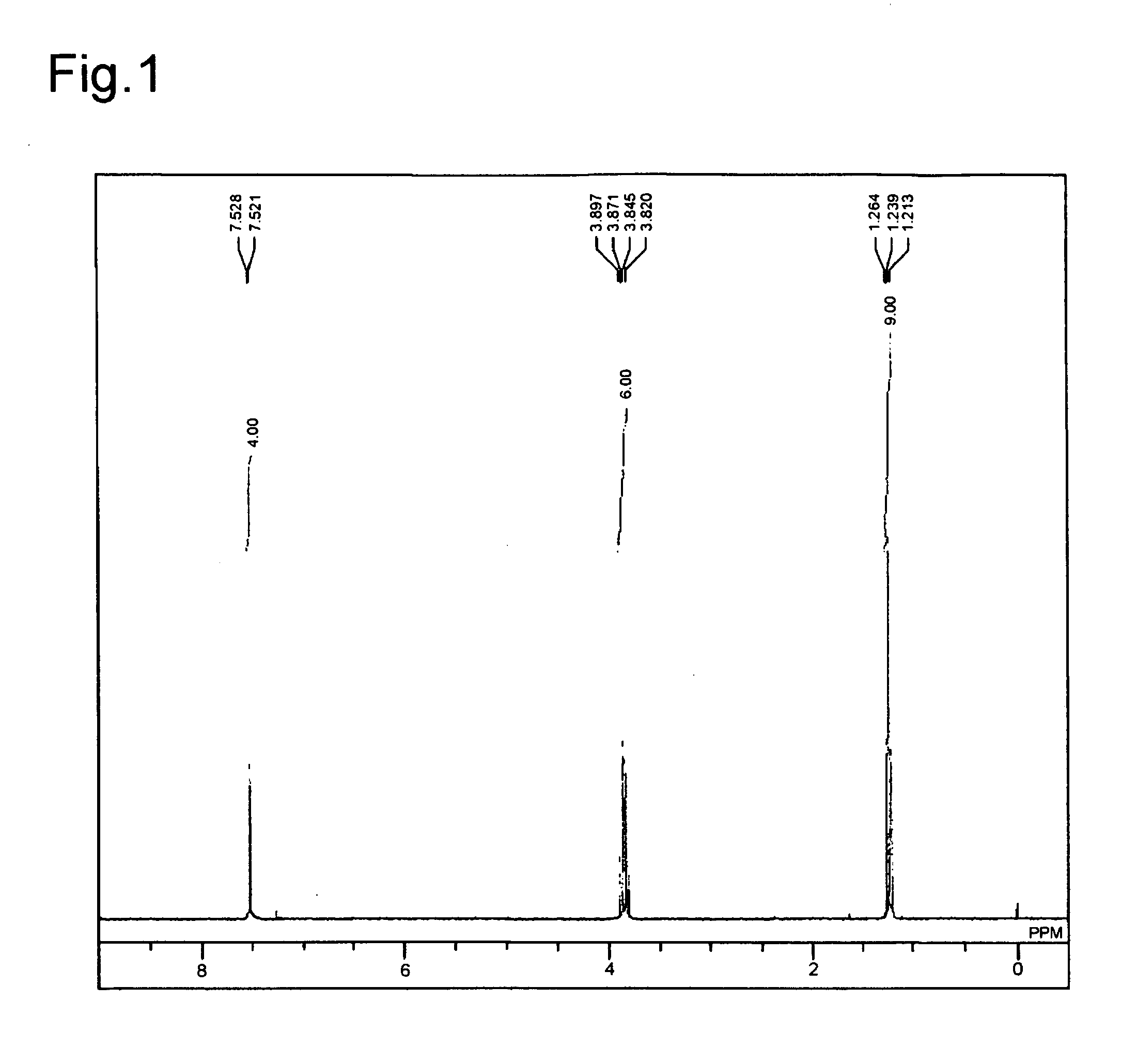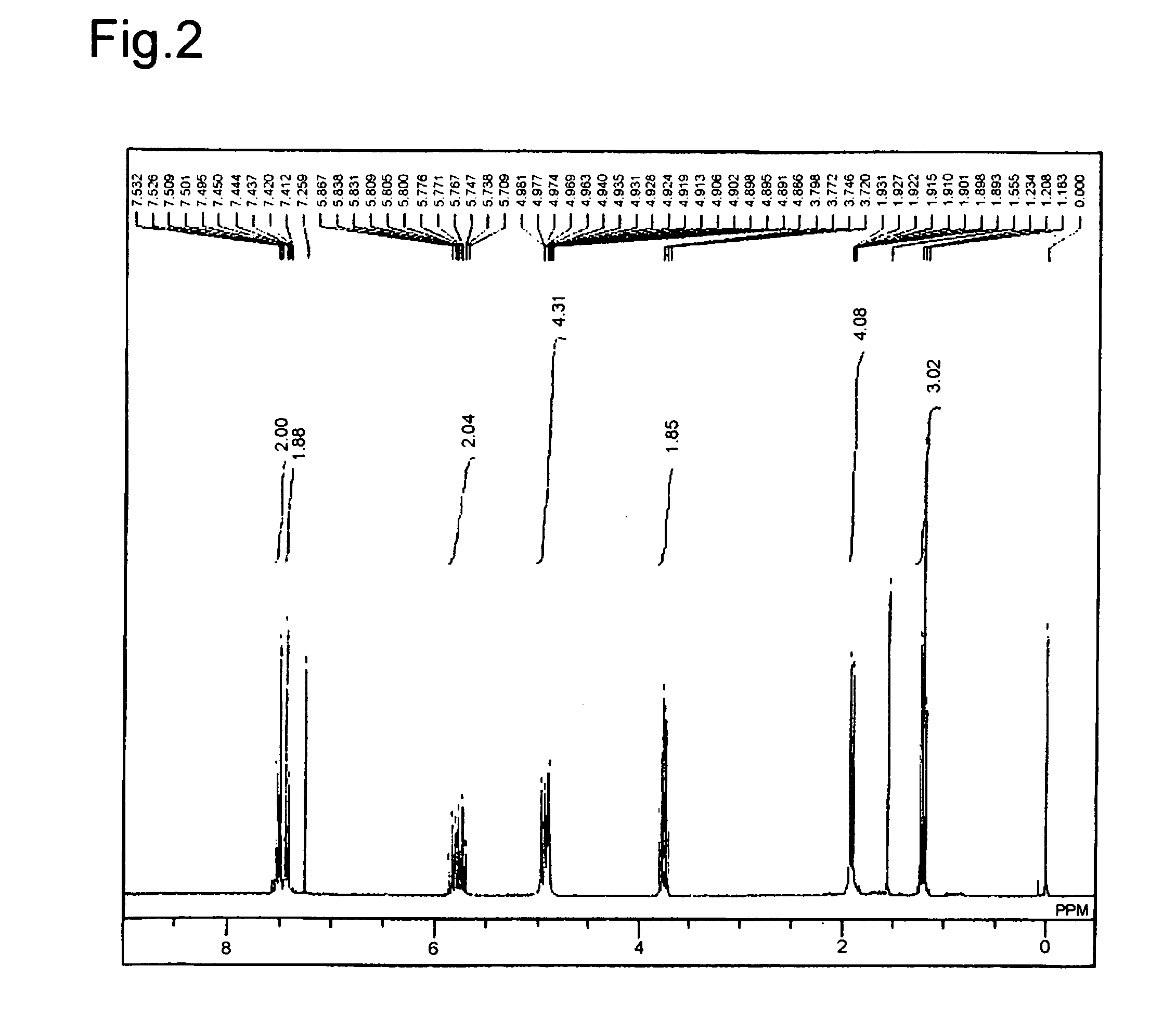Organosilane compound and organosilica obtained therefrom
a technology of organosilica and compound, which is applied in the field of organosilica obtained from the organosilane compound, can solve the problems of difficult use of the organosilane compounds of the above-mentioned documents as raw materials, and achieve the effect of improving the stability and stability of the compound
- Summary
- Abstract
- Description
- Claims
- Application Information
AI Technical Summary
Benefits of technology
Problems solved by technology
Method used
Image
Examples
synthesis example 1
[0104](S)-5,5′-Diethynyl-2,2′-bis(diphenylphosphinyl)-1,1′-binaphthyl was prepared as follows.
[0105]Firstly, 5,5′-trimethylsilylethynyl BINAP dioxide (301 mg, 0.355 mmol) was dissolved in dichloromethane (12 mL), and then tetrahydrofuran (THF) solution of 1.0-M tetrabutylammonium fluoride (0.78 mL, 0.781 mmol) was added dropwise. The resultant solution was then stirred at room temperature for 2 hours. Subsequently, the solvent in the solution was concentrated, a crude product thus obtained was purified by silica gel column chromatography (hexane / ethyl acetate=1 / 3)) and thus (S)-5,5′-diethynyl-2,2′-bis(diphenylphosphinyl)-1,1′-binaphthyl was obtained (218.4 mg, 88% yield).
[0106]The obtained compound was subjected to 1H NMR and 31P NMR measurements. The obtained results are shown below.
[0107]1H NMR (CDCl3) 8.43-8.39 (dd, J=8.6, 2.4 Hz, 2H), 7.74-7.66 (m, 4H), 7.60-7.49 (m, 4H), 7.43-7.21 (m, 16H), 6.74-6.66 (m, 4H), 3.46 (s, 2H);
[0108]31P NMR (CDCl3) 28.48
[0109]From the NMR measuremen...
example 1
[0110](S)-5,5′-Bis(4-diallylethoxysilylphenylethynyl)-2,2′-bis(diphenylphosphinyl)-1,1′-binaphthyl was prepared as follows.
[0111]A first solution (8 mL) was prepared by dissolving (S)-5,5′-diethynyl-2,2′-bis(diphenylphosphinyl)-1,1′-binaphthyl (166.8 mg, 0.237 mmol) obtained in Synthesis example 1 in benzene. Then, 4-diallylethoxysilyliodobenzene (211.1 mg, 0.589 mmol), PdCl2(PPh3)2 (17.5 mg, 0.025 mmol; Ph=phenyl), copper (I) iodide (CuI: 4.8 mg, 0.025 mmol) were dissolved in benzene (1 mL), and the resultant solution was added with triethylamine (0.21 ml, 1.50 mmol). After that, the first solution that was cooled down to 0° C. was added, and thus obtained was a second solution. The second solution thus obtained was stirred at 50° C. for 23 hours. Subsequently, the solvent in this second solution was concentrated. Then, a crude product thus obtained was purified by silica gel column chromatography (hexane / ethyl acetate (hexane / EtOAc)=1 / 1: Et=ethyl), and thus (S)-5,5′-bis(4-diallyle...
example 2
[0116]4-(diallylethoxysilyl)aniline was prepared as follows.
[0117]Firstly, distilled dimethylformamide (dist. DMF: 4 mL), distilled triethylamine (dist. Et3N: 190 μL, 1.38 mmol), and triethoxysilane (169 μL, 0.92 mmol) are added dropwise to a mixture of 4-iodoaniline (100 mg, 0.46 mmol), [Rh(CH3CN)2(cod)]BF4 (5.2 mg, 0.014 mmol: cod=1,5-cyclooctadiene), tetrabutylammoniumiodide (n-BU4NI: 169 mg, 0.46 mmol). The resultant mixture was stirred under a nitrogen atmosphere at 80° C. for 1 hour to obtain a reaction mixture. Then, the solvent in the obtained reaction mixture was distilled away with a vacuum pump. A residue was extracted with ether, and then a salt thus formed was removed through a celite-filtration process. After that, an organic layer is collected, and the solvent in the organic layer is distilled away with an evaporator to obtain a crude product (I) (189 mg).
[0118]Subsequently, the obtained crude product was added directly with distilled ether (dist. ether: 2 mL) under a...
PUM
| Property | Measurement | Unit |
|---|---|---|
| refractive-index | aaaaa | aaaaa |
| 13C NMR | aaaaa | aaaaa |
| absorption spectrum | aaaaa | aaaaa |
Abstract
Description
Claims
Application Information
 Login to View More
Login to View More - R&D
- Intellectual Property
- Life Sciences
- Materials
- Tech Scout
- Unparalleled Data Quality
- Higher Quality Content
- 60% Fewer Hallucinations
Browse by: Latest US Patents, China's latest patents, Technical Efficacy Thesaurus, Application Domain, Technology Topic, Popular Technical Reports.
© 2025 PatSnap. All rights reserved.Legal|Privacy policy|Modern Slavery Act Transparency Statement|Sitemap|About US| Contact US: help@patsnap.com



